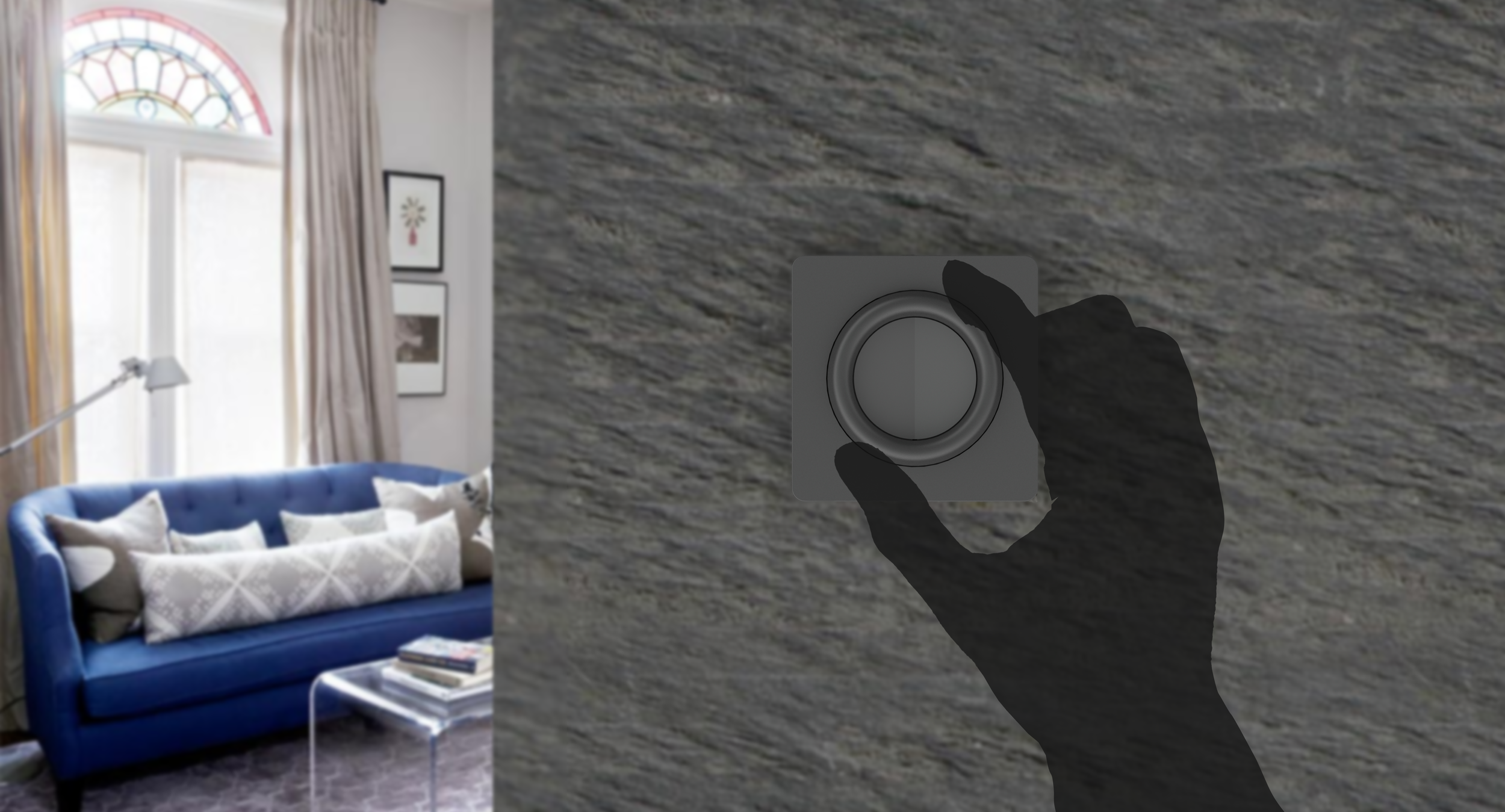Smart Shift: An exploration towards rich interactions in smart homes
by Ryley Davar
Final prototype with light and haptic example
Smart switch in home context
Abstract
Advances in smart home technology and an increased number of devices in the home have seen houses saturated with smart technology. However, these technologies are often poorly integrated digital solutions that strip control from the homeowner. In removing the physical form from the interaction, there is an unsettling release of control over one’s surroundings, as there is no longer the certainty or sanctity of the private home.
This project explores possible directions for creating a stimulating experience within which people can develop meaningful and engaging interactions, gaining emotional enrichment through haptics and intuitive movement to create enriching, interactive experiences within the home. A human-centred design approach is adopted to embed rich interactions into a smart home control device to enhance how users interact with their environment and have stimulating interactions with their home that create emotionally positive experiences. By integrating physical interfaces to control digital interactions, the user has more control over their interactions in their home, resulting in better physical and psychological well-being. This paper explores Frens’s design methodology of form conveying use to bridge the gap between existing smart home controllers and rich, human-centred design thinking to create a foundation for future smart home technology.
“By integrating physical interfaces to control digital interactions, the user has more control over their interactions in their home, resulting in better physical and psychological well-being.”
Section view of planar carriage
Design Intent
The project looks at developing a smart home controller that uses rich and intuitive interactions to develop more integrated solutions to smart home control devices.
The project seeks to create new pathways for smart homes, combining the versatility of smart home controllers with user-focused, intuitive interactions. Observation of research into smart home controllers reveals a clear gap in design thinking between engaging user input and agency over their home environment. This project engages the themes of connection, control and flexibility through interactions with the product to explore whether new ways of interacting with smart devices can create better interactive experiences, changing the home into a dynamic and responsive ecosystem. The project combines digital haptic feedback with physical mechanical movement to create an integrated solution that connects the physical and digital aspects of the smart home, providing a holistic home environment that is physically engaging and mentally stimulating.
Embedding rich interactions into smart home controllers creates an opportunity to shift the trajectory of contemporary design pathways surrounding smart homes towards a new conceptual model, restoring a sense of control to the individual and affording a dynamic home environment.
“The project seeks to create new pathways for smart homes, combining the versatility of smart home controllers with user-focused, intuitive interactions.”
Exploded view of final prototype
Introduction to haptics interaction guide
Render of planar rotation
Bio
As a product & industrial designer, I’m always looking to solve problems and help improve experiences for people. Interested in new technologies and emerging material sciences, I use this fascination to research and develop new and exciting approaches to products. Through exploration of integrated products, my aim is to connect with users through my designs to create enjoyable experiences through meaningful solutions.
My design practice often uses a hands-on approach to create CAD designs, quick prototypes using 3D printing, and other emerging technologies. This allows more time for iteration and user feedback to improve the quality of each design. Throughout my design journey, I’m constantly looking towards new technologies and learning new skill sets to improve my professional practice. I’m always looking to expand my knowledge and work collaboratively towards integration to reach the best solution that answers the problem space.
previous project / next project
Copyright UTS Product Design 2020

